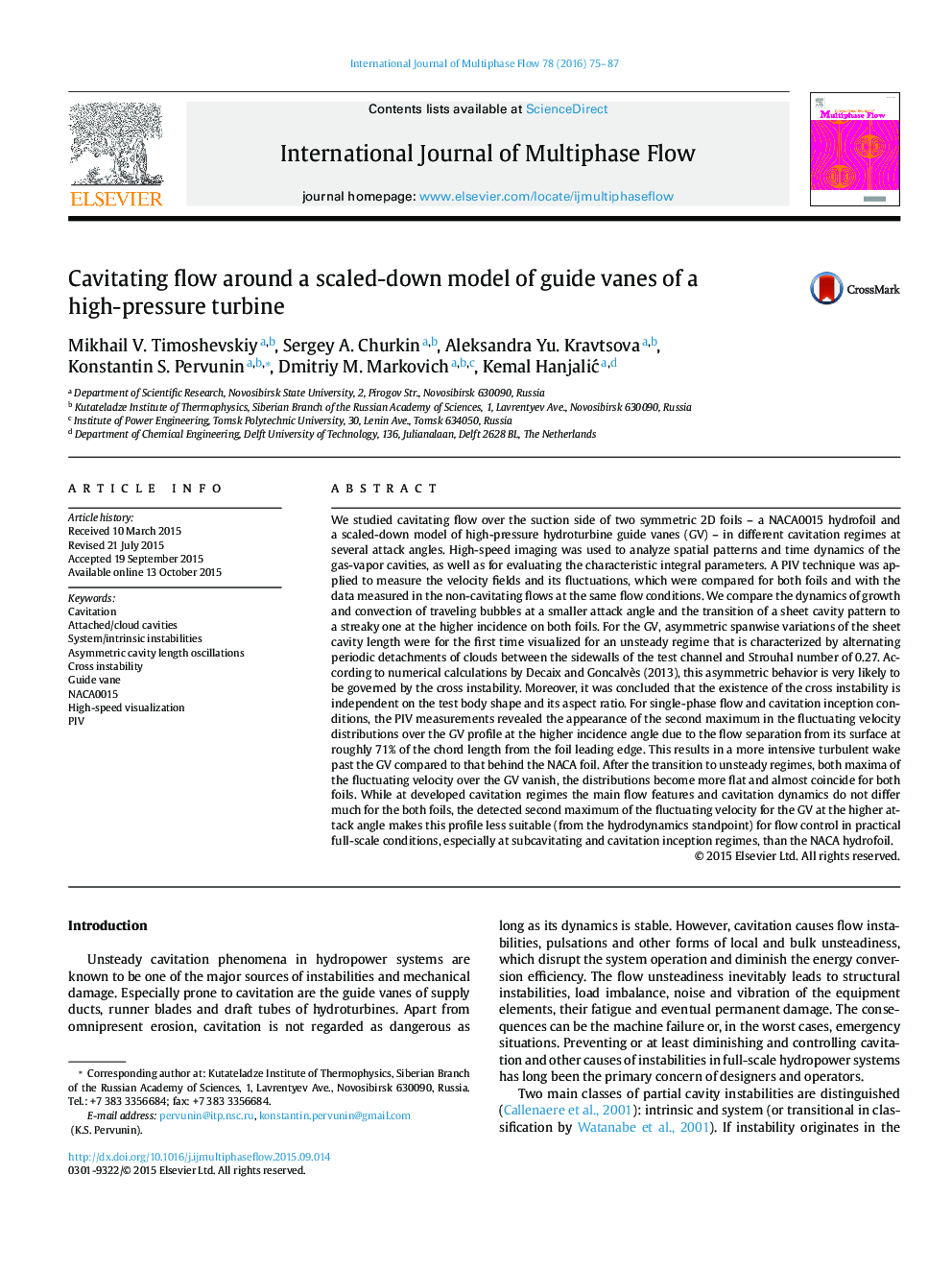| کد مقاله | کد نشریه | سال انتشار | مقاله انگلیسی | نسخه تمام متن |
|---|---|---|---|---|
| 7060309 | 1458500 | 2016 | 13 صفحه PDF | دانلود رایگان |
عنوان انگلیسی مقاله ISI
Cavitating flow around a scaled-down model of guide vanes of a high-pressure turbine
ترجمه فارسی عنوان
جریان هوا را در اطراف یک مدل کاهش یافته از چشمه های راهنمایی یک توربین با فشار بالا بکشید
دانلود مقاله + سفارش ترجمه
دانلود مقاله ISI انگلیسی
رایگان برای ایرانیان
کلمات کلیدی
موضوعات مرتبط
مهندسی و علوم پایه
مهندسی شیمی
جریان سیال و فرایندهای انتقال
چکیده انگلیسی
We studied cavitating flow over the suction side of two symmetric 2D foils - a NACA0015 hydrofoil and a scaled-down model of high-pressure hydroturbine guide vanes (GV) - in different cavitation regimes at several attack angles. High-speed imaging was used to analyze spatial patterns and time dynamics of the gas-vapor cavities, as well as for evaluating the characteristic integral parameters. A PIV technique was applied to measure the velocity fields and its fluctuations, which were compared for both foils and with the data measured in the non-cavitating flows at the same flow conditions. We compare the dynamics of growth and convection of traveling bubbles at a smaller attack angle and the transition of a sheet cavity pattern to a streaky one at the higher incidence on both foils. For the GV, asymmetric spanwise variations of the sheet cavity length were for the first time visualized for an unsteady regime that is characterized by alternating periodic detachments of clouds between the sidewalls of the test channel and Strouhal number of 0.27. According to numerical calculations by Decaix and Goncalvès (2013), this asymmetric behavior is very likely to be governed by the cross instability. Moreover, it was concluded that the existence of the cross instability is independent on the test body shape and its aspect ratio. For single-phase flow and cavitation inception conditions, the PIV measurements revealed the appearance of the second maximum in the fluctuating velocity distributions over the GV profile at the higher incidence angle due to the flow separation from its surface at roughly 71% of the chord length from the foil leading edge. This results in a more intensive turbulent wake past the GV compared to that behind the NACA foil. After the transition to unsteady regimes, both maxima of the fluctuating velocity over the GV vanish, the distributions become more flat and almost coincide for both foils. While at developed cavitation regimes the main flow features and cavitation dynamics do not differ much for the both foils, the detected second maximum of the fluctuating velocity for the GV at the higher attack angle makes this profile less suitable (from the hydrodynamics standpoint) for flow control in practical full-scale conditions, especially at subcavitating and cavitation inception regimes, than the NACA hydrofoil.
ناشر
Database: Elsevier - ScienceDirect (ساینس دایرکت)
Journal: International Journal of Multiphase Flow - Volume 78, January 2016, Pages 75-87
Journal: International Journal of Multiphase Flow - Volume 78, January 2016, Pages 75-87
نویسندگان
Mikhail V. Timoshevskiy, Sergey A. Churkin, Aleksandra Yu. Kravtsova, Konstantin S. Pervunin, Dmitriy M. Markovich, Kemal HanjaliÄ,
